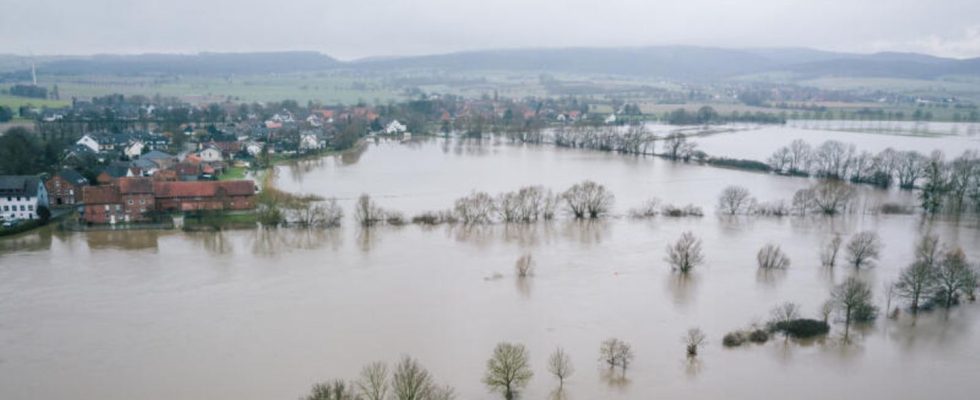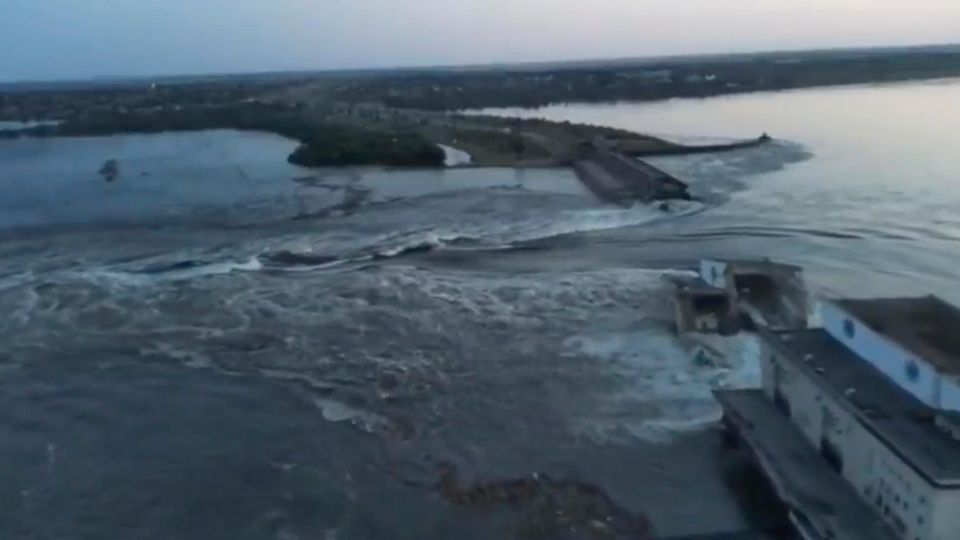Rising water levels
Flood situation remains tense – weir on the Elbe is opened
In many regions of Germany, such as here in Fuhlen, meadows and fields are flooded by floodwaters.
© Ole Spata/dpa
At The flood situation remains tense in some rivers in Germany. Areas affected include: at the Elbe in Saxony and Saxony-Anhalt as well at the Weser in North Rhine-Westphalia and Lower Saxony.
In Dresden the six-meter mark is due to be reached on Thursday morning Elbe can be crossed. In order to protect Saxony-Anhalt’s state capital Magdeburg from flooding, the Pretzien weir will be pulled on Thursday morning. The approximately 135 meter long weir was last opened in June 2013. Even now it is supposed to ensure that a third of the Elbe water flows into a 21 kilometer long canal around Schönebeck, Magdeburg and other places in the Elbe lowlands until it flows back into the Elbe.
Floods in Lower Saxony: Levels expected to rise in some cases
The highest flood alert level 4 is expected to apply to the Helme in the next few days. In Lower Saxony, the state agency for water management, coastal and nature conservation expected water levels to continue to rise, especially on the Middle Weser and the upper reaches of the Aller, Leine and Oker. According to the local fire department, a dike tore in the municipality of Lilienthal near Bremen and the affected area was evacuated on Wednesday afternoon. Due to a sodden dike, other streets were evacuated on Thursday night. In neighboring Bremen, the flood situation in the Borgfeld district is similarly tense. Interior Senator Ulrich Mäurer (SPD) wants to see the situation there for himself on Thursday. In the Bremen district of Timmersloh, the dikes could be reworked so that evacuations no longer had to take place there, as a fire department spokesman said early on Thursday morning.
Christmas floods
The flood situation is easing to some extent – the risk of heavy rain is increasing again
Because of the Aller flood, around 300 people in the Lower Saxony community of Winsen had to leave their homes. The settlements of Westohe and Südohe would have to be evacuated, the Celle district announced on Wednesday evening. The water level on the streets there had risen to around 40 to 50 centimeters, so the electricity was turned off for safety reasons. The Allertal sports hall in Winsen is currently being set up as emergency accommodation. In some places in the Verden district there was still a “threatening situation” on Thursday night due to flooding and weakening dikes, as a fire department spokesman said.
Several districts in Lower Saxony identified a preliminary stage of the disaster alarm – this means, among other things, that the district administrations have easier access to relief workers. According to state fire director Dieter Rohrberg, the town of Sarstedt in the Hildesheim district, where the Innerste and Leine rivers converge, was particularly affected.
On the upper reaches of the Weser from Hann. From Münden to Höxter in North Rhine-Westphalia, the water levels fell on Wednesday according to the state office, but rising water levels were predicted for the Middle Weser. At the Drakenburg gauge in the Nienburg district, the previous record level from 1981, namely 8.34 meters, could even be exceeded, it was said. In North Rhine-Westphalia, the numerous dams also remain under observation.
Hope for a short break from the rain
Some are hoping for a short-term relief: According to the German Weather Service (DWD) forecast, it will remain largely dry in Germany on Thursday. This could ease the flood situation on some rivers somewhat. However, according to the DWD, the risk of heavier rainfall will then increase again. “Especially in the west and northwest, the weather models indicate a lot of wet weather, which will probably cause river levels to rise quickly again,” said a meteorologist on Wednesday.
Climate change makes extreme weather events more likely. Potsdam climate researcher Stefan Rahmstorf wrote on


